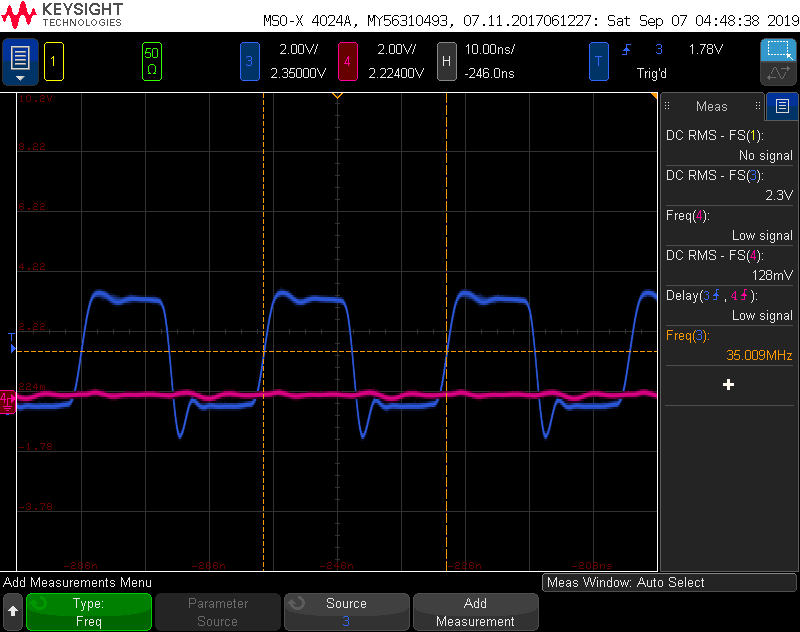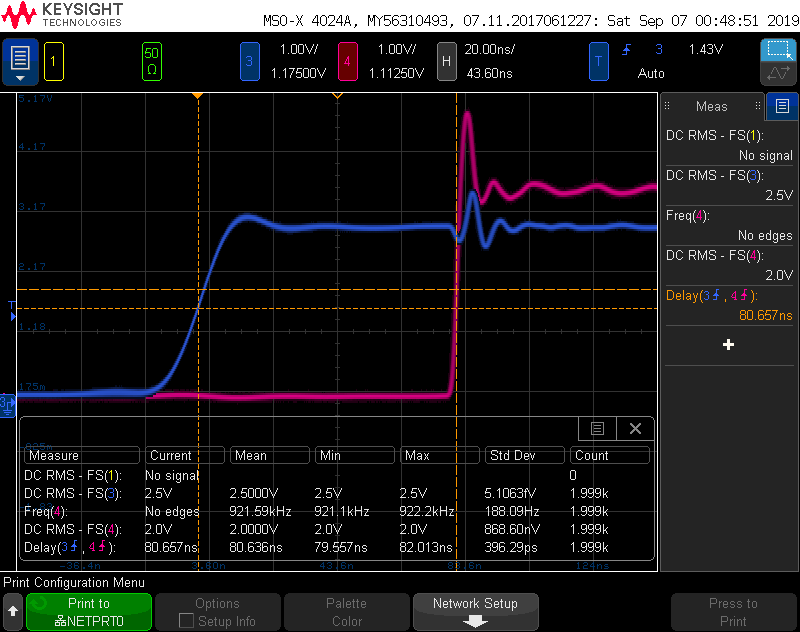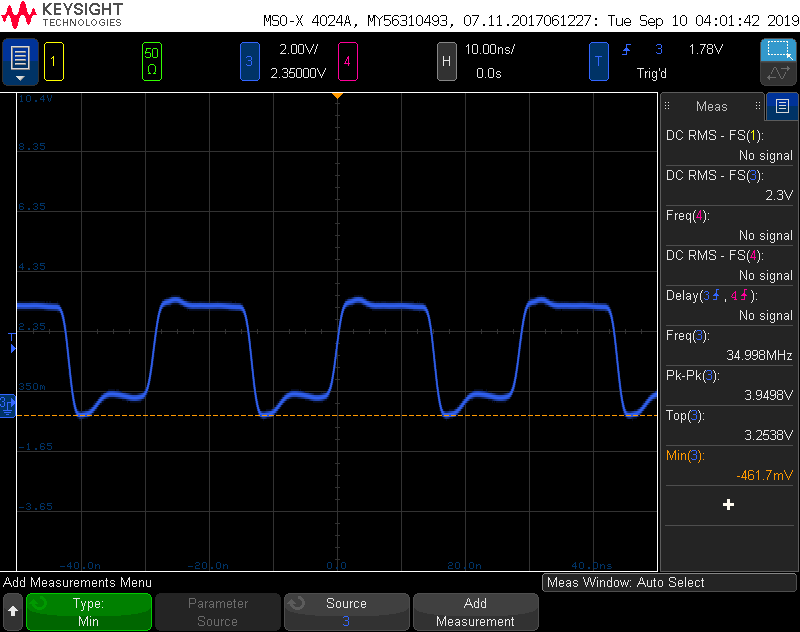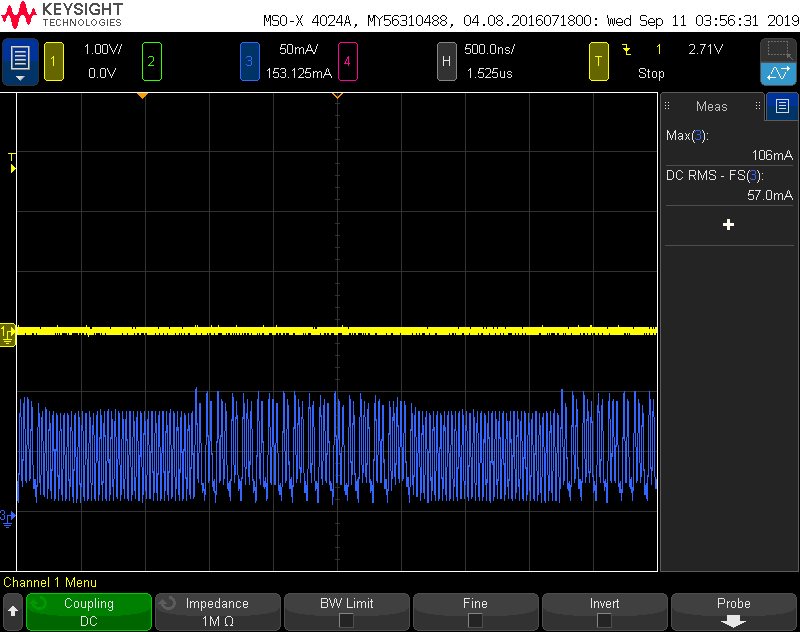We have been using the SN74LVT245BPW to transmit switching signals ranging from 200kHz to 35MHz. The input is driven directly by a Cyclone V FPGA at 3.3V and the output drives the input of an isolator IC with 125Ω thevenin resistor terminations. SN74LVT245BPW and the isolator IC are both housed on different PCBAs. After fabrication and assembly, each PCBA with the SN74LVT245BPW component is individually tested with a fixture and all output signals are proven to work; however, after a variable amount of time in the field where both PCBAs are connected in the system, the output becomes latched to a high or a low state. The following tests have been performed with the following results:
1. Testing the individual PCBA with the SN74LVT245BPW component outside the system - output of the SN74LVT245BPW component remains latched
2. Removing the SN74LVT245BPW component from the PCBA and testing it using a bench power supply + a function generator - the output works again and input signals are transmitted at the output.
3. We have replaced the previously broken buffer with an identical new part and power cycled the system over 5000 times and have not seen the new buffer break.
See attached PDF for schematic overview of design. In the Schematic, U4 is the buffer that is failing. We would like to determine the root cause for the failure, and/or a method of early detection of the failure.










